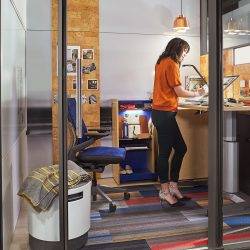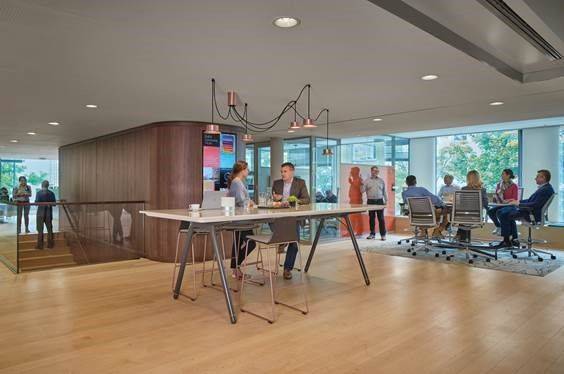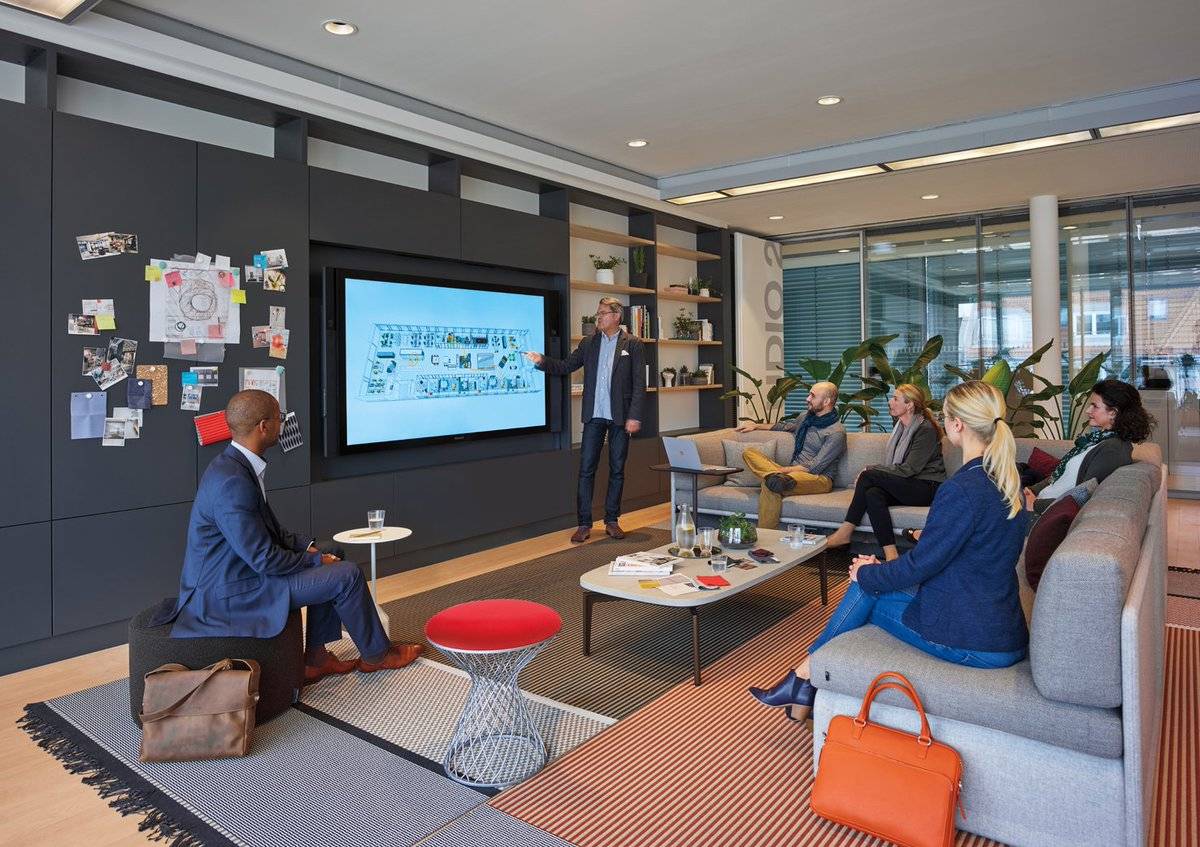 Productivity in the UK workforce is dropping; output per hour fell 0.4 per cent in the last quarter of 2018 compared with the previous and grew just 0.2 per cent on the third quarter of 2017, according to the Office for National Statistics. Yet the UK workforce log the longest hours in Europe, working 42.3 hours per week on average. Clearly something isn’t lining up. So we must surely ask the question, what is going wrong and what can we do to improve the situation?
Productivity in the UK workforce is dropping; output per hour fell 0.4 per cent in the last quarter of 2018 compared with the previous and grew just 0.2 per cent on the third quarter of 2017, according to the Office for National Statistics. Yet the UK workforce log the longest hours in Europe, working 42.3 hours per week on average. Clearly something isn’t lining up. So we must surely ask the question, what is going wrong and what can we do to improve the situation?
One of the major issues facing organisations is the lack of engagement of the workforce; according to Steelcase research only 29% of UK workers are engaged. We assume the 40% of UK employees that reported being unengaged are not actively focused on doing their work, coasting through the day and putting the time in without energy and enthusiasm. These disengaged workers are ‘toxic’, spreading their unhappiness like a contagion to others. Research from Gallup shows that companies with an engaged workforce can expect productivity increases of 21%; with engagement in the UK so low we surely have a great opportunity to improve productivity levels.
As well as engagement and wellbeing issues, companies are finding the competition to secure talent has never been so fierce. While attracting talent is important, retaining it is imperative. More than ever, people are looking for a sense of purpose at work and can afford to be more selective as they choose where to settle. Organisations that don’t then provide a great employee experience or create the conditions to promote an engaged workforce are effectively leaving money on the table.
What do organisations need to do to improve the situation?
The first step is to challenge the archetypal notion most people (and organisations) still have of work. Many knowledge-based organisations still adhere to the industrial, production line view of work as laid out in the 80’s. focusing on the output of work. In fact, many managers are still directed to be the modern overseer checking up on progress of workers and managing targets. But companies with this outdated view will fall behind as we are at the tipping point of the 4th Industrial Revolution; a term coined by Professor Klaus Schwab Founder and Executive Chairman of the World Economic Forum. He believes this digital revolution will “fundamentally change the way we live, work and relate to one another”.
What does creativity have to do with it?
 As we enter this new era many tasks are becoming digitised; differentiation, value and market share are driven by innovation and businesses are realising they cannot cost cut their way to growth. Creativity is the new fuel and “ideas are the currency of the new economy” according to Richard Florida author of ‘The Rise of the Creative Class 2002’.
As we enter this new era many tasks are becoming digitised; differentiation, value and market share are driven by innovation and businesses are realising they cannot cost cut their way to growth. Creativity is the new fuel and “ideas are the currency of the new economy” according to Richard Florida author of ‘The Rise of the Creative Class 2002’.
Creative work isn’t about artistic endeavour; it’s a process deployed to solve the complex problems faced by the modern knowledge worker. As work processes become increasingly digitised employees are freed to focus on high value creative work such as making sense of data, deriving insights and forming new ideas to fuel innovation. But here in lies the rub, if creativity is the fuel that drives innovation, an engaged workforce greases the wheels.
Creativity is demanding work; it requires a workforce that is willing to give their best and is motivated to contribute to organisational success. In order to be successful companies should consult their employees on the type of environment they need to feel creative. They should make sure they understand where their employees like to be creative and how it makes them feel in order to ensure their workplace replicates those conditions for them. Providing the right physical spaces to not only collaborate and share ideas but also private space where employees can reflect and focus helps to provide meaning and purpose to work and empower employees to challenge and bring ideas to the table.
“Creativity isn’t a linear process, it’s not even a predictable process,” according to James Ludwig, head of global design and product engineering at Steelcase. “It has a rhythm of different activities and requires both convergent and divergent thinking, with people coming together in small or large groups, and moving apart to do work alone.”
So, what can organisations do to foster creativity?

It’s fundamentally important to think about creating a holistic and authentic work experience that allows a culture of wellbeing and engagement to thrive by aligning the core elements of work process, tools and space with the desired organisational culture. The younger generations (Z and Y) are voting with their wallets, choosing to spend increasing amounts on experiences over possessions, they are demanding a greater experience from work and have higher expectations of their work place.
According to Steelcase research, one in five workers in the UK (22%) strongly believe their workspace doesn’t inspire creativity. Yet in the digital world physical space plays an increasingly important role; as the world becomes more digital people are becoming more aware of the materiality of space. This is where workplace design and the physical environment can help facilitate change. Understanding that space shapes behaviour, fostering creativity starts with providing areas for people to come together in groups as well as spaces to move apart and to work individually in their creative process. Providing an ecosystem of spaces that allows users choice and control on where and how they work can also improve people’s wellbeing and engagement.
In this modern world where innovation is king and creativity is the key to the castle, companies need to provide spaces that blur the boundaries between the physical and virtual to provide seamless interactions between people and people, people and technology and people and information.
__________________________________________
Zoe Humphries is a Senior Workplace Consultant at Steelcase and has worked with the brand and it major corporate clients for over nine years.













January 23, 2019
Work’s not working; to be productive we need to get creative
by Zoe Humphries • Comment, Workplace design
One of the major issues facing organisations is the lack of engagement of the workforce; according to Steelcase research only 29% of UK workers are engaged. We assume the 40% of UK employees that reported being unengaged are not actively focused on doing their work, coasting through the day and putting the time in without energy and enthusiasm. These disengaged workers are ‘toxic’, spreading their unhappiness like a contagion to others. Research from Gallup shows that companies with an engaged workforce can expect productivity increases of 21%; with engagement in the UK so low we surely have a great opportunity to improve productivity levels.
As well as engagement and wellbeing issues, companies are finding the competition to secure talent has never been so fierce. While attracting talent is important, retaining it is imperative. More than ever, people are looking for a sense of purpose at work and can afford to be more selective as they choose where to settle. Organisations that don’t then provide a great employee experience or create the conditions to promote an engaged workforce are effectively leaving money on the table.
What do organisations need to do to improve the situation?
The first step is to challenge the archetypal notion most people (and organisations) still have of work. Many knowledge-based organisations still adhere to the industrial, production line view of work as laid out in the 80’s. focusing on the output of work. In fact, many managers are still directed to be the modern overseer checking up on progress of workers and managing targets. But companies with this outdated view will fall behind as we are at the tipping point of the 4th Industrial Revolution; a term coined by Professor Klaus Schwab Founder and Executive Chairman of the World Economic Forum. He believes this digital revolution will “fundamentally change the way we live, work and relate to one another”.
What does creativity have to do with it?
Creative work isn’t about artistic endeavour; it’s a process deployed to solve the complex problems faced by the modern knowledge worker. As work processes become increasingly digitised employees are freed to focus on high value creative work such as making sense of data, deriving insights and forming new ideas to fuel innovation. But here in lies the rub, if creativity is the fuel that drives innovation, an engaged workforce greases the wheels.
Creativity is demanding work; it requires a workforce that is willing to give their best and is motivated to contribute to organisational success. In order to be successful companies should consult their employees on the type of environment they need to feel creative. They should make sure they understand where their employees like to be creative and how it makes them feel in order to ensure their workplace replicates those conditions for them. Providing the right physical spaces to not only collaborate and share ideas but also private space where employees can reflect and focus helps to provide meaning and purpose to work and empower employees to challenge and bring ideas to the table.
“Creativity isn’t a linear process, it’s not even a predictable process,” according to James Ludwig, head of global design and product engineering at Steelcase. “It has a rhythm of different activities and requires both convergent and divergent thinking, with people coming together in small or large groups, and moving apart to do work alone.”
So, what can organisations do to foster creativity?
It’s fundamentally important to think about creating a holistic and authentic work experience that allows a culture of wellbeing and engagement to thrive by aligning the core elements of work process, tools and space with the desired organisational culture. The younger generations (Z and Y) are voting with their wallets, choosing to spend increasing amounts on experiences over possessions, they are demanding a greater experience from work and have higher expectations of their work place.
According to Steelcase research, one in five workers in the UK (22%) strongly believe their workspace doesn’t inspire creativity. Yet in the digital world physical space plays an increasingly important role; as the world becomes more digital people are becoming more aware of the materiality of space. This is where workplace design and the physical environment can help facilitate change. Understanding that space shapes behaviour, fostering creativity starts with providing areas for people to come together in groups as well as spaces to move apart and to work individually in their creative process. Providing an ecosystem of spaces that allows users choice and control on where and how they work can also improve people’s wellbeing and engagement.
In this modern world where innovation is king and creativity is the key to the castle, companies need to provide spaces that blur the boundaries between the physical and virtual to provide seamless interactions between people and people, people and technology and people and information.
__________________________________________
Zoe Humphries is a Senior Workplace Consultant at Steelcase and has worked with the brand and it major corporate clients for over nine years.